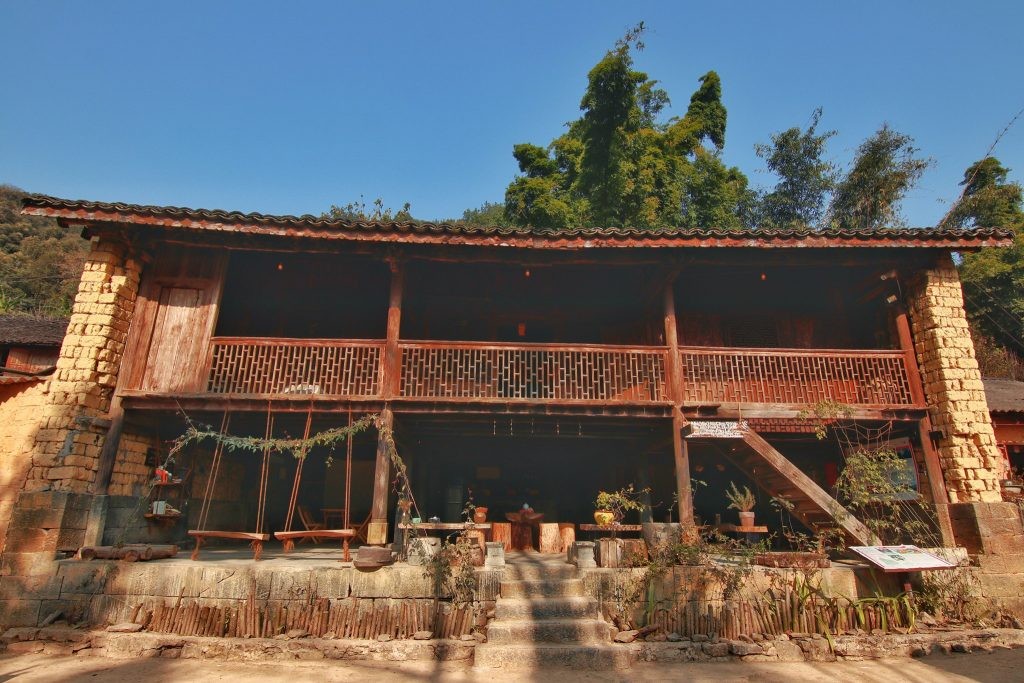Top 8 Best Ordinary Classic Cars Of All Time
Classic cars are treasures, and with a style that is painted with time and history. A lot of classic cars were sold with the highest prices in the auctions. Let’s take a look at some of these most ordinary classic cars of all time, which will offer you a great driving experience.
1. Renault 5 (1972-1996)
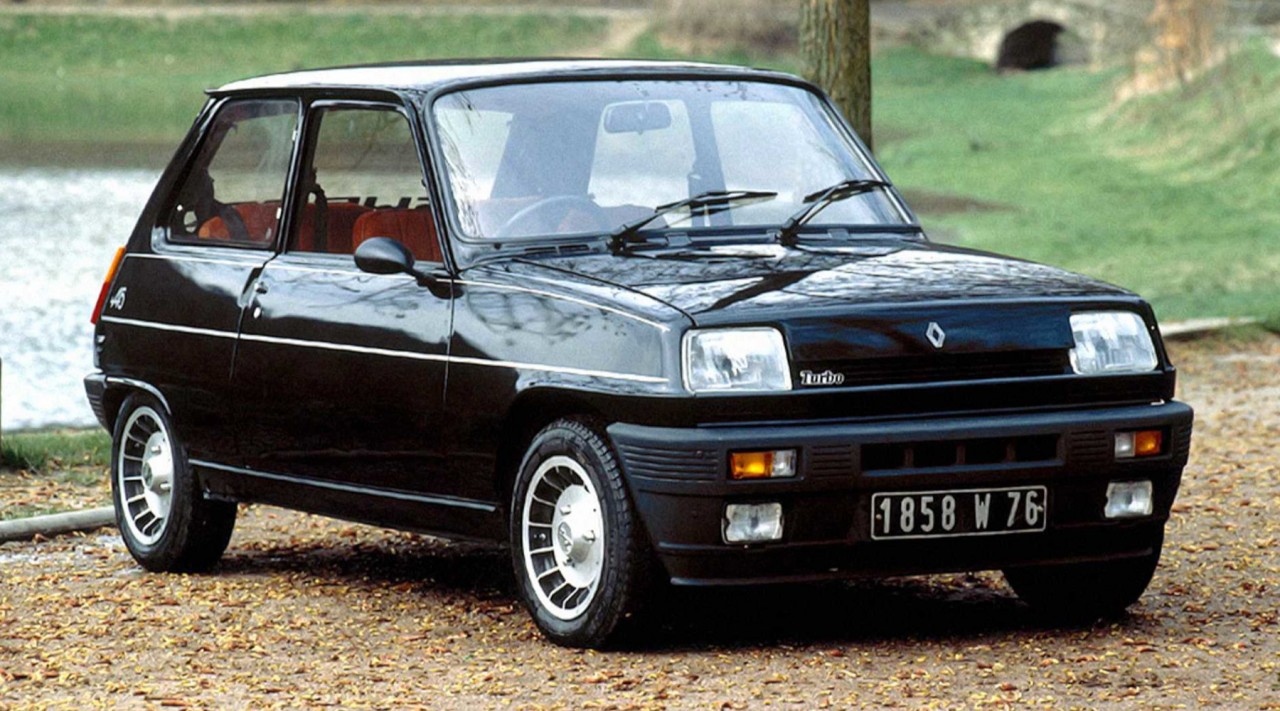 |
| Photo: Zinh Watch |
The Renault 5 not only brought a design revolution, which competitors later made, but also showed picky Americans that the European car can be beautiful and elegant without a high price. At first glance, we might think that the development of such a car took years of research and a lot of tested prototypes, but no - Renault 5 was created quite by accident by a man who in his spare time worked on drawings of a small compact, which customers wanted and loved, and most importantly - affordable enough that everyone could afford it. French carmaker Renault played a major role in modernizing the domestic auto industry after World War II. Despite the strong competition in the form of domestic ones as well Citroen i Peugeot, the introduction of the 4CV model back in 1947 brought Renault the first brand new post-war model.
This car was of good quality, easy to maintain, and cheap enough for the average French family, selling over a million copies over the next 14 years. Some larger and more luxurious models followed, such as the Dauphine and Colarele, but by the late 1950s, their design seemed outdated. One of the biggest criticisms of Renault cars was the position of the engine, which was located in the back, but that also changed in 1961 when the Renault 4. Introduced as the first large-small car in the world, the Renault 4 had an engine forward and well-used space thus has definitely earned its nickname.
2. Citroen Ami (1961-1978)
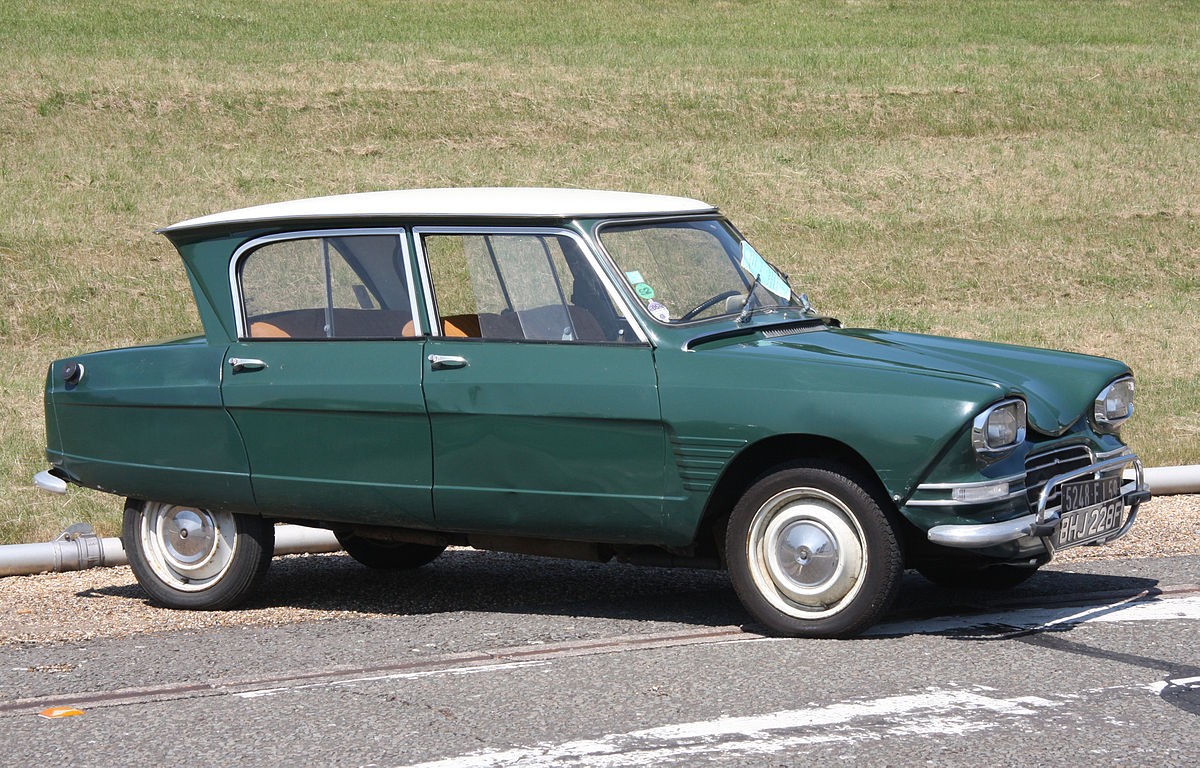 |
| Photo: OUTSTANDING CARS |
The Citroën Ami is a four-door, front-wheel-drive economy (B-segment) family car, manufactured and marketed by Citroën from 1961 to 1978.
The Ami was offered in saloon and estate/wagon/break body styles over two generations, the Ami 6 and the Ami 8. The later Ami 8 fastback saloon featured a steeply raked rear window, in contrast to the earlier reverse-raked rear window of the Ami 6 notchback.
Over 1,840,396 units were manufactured over the entire production run. The Ami and Citroën Dyane were replaced by the Citroën Visa and Citroën Axel.
Ami is the French word for friend. With its 602 cc engine capacity fractionally above the limit for 2 CV designation, the Ami was nicknamed the 3CV, differentiating it from the long-established Citroën 2CV.
3CV stands for Trois chevaux, or "three horses" — CV originally being the initials for "chevaux-vapeur" (horsepower – literally 'steam horses'), but used here for "chevaux fiscaux". The "cheval fiscal" was a French fiscal unit based on engine size with the smaller CV designating economy cars.
The Ami and the Ford Taunus P3 were the first cars with rectangular or lozenge-shaped (non-round) headlights. This technical innovation was developed by lighting manufacturers Hella (Taunus) and Cibie (Ami). Soon this innovation found its way to the exclusive coach-built Maserati 5000 GT. At the time, it was an unquestioned article of faith that headlights were round, and in the United States, it was the law, so these new headlights were illegal there until 1975. Ten years later this had inspired European automakers to come up with various non-round headlamp shapes.
3. Ford Escort mk2 (1974-1980)
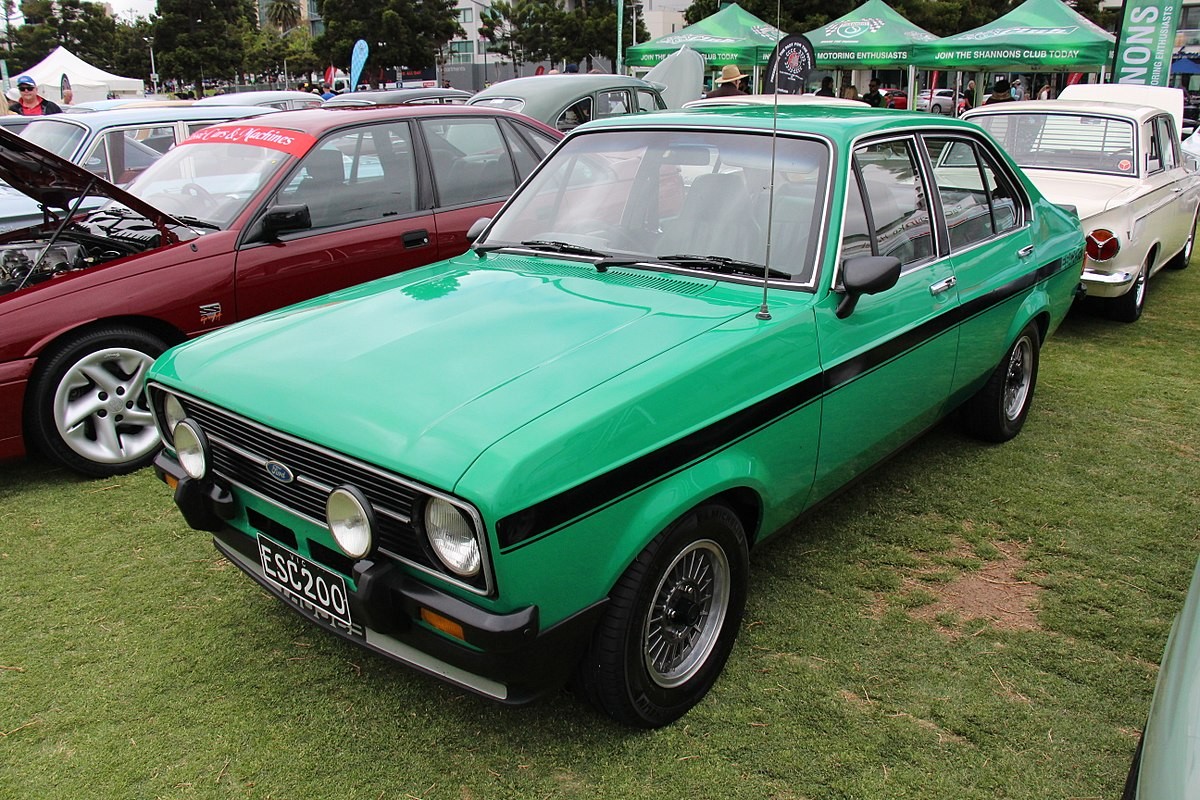 |
| Photo: Wikimedia Commons |
It seems only a few years ago that Mk2 Escorts were two-a-penny. No more! Rust and low values have taken a heavy toll while rallying associations – and family memories – have made desirability soar and prices climb exponentially as demand outstripped supply.
Now, Mk2s are being imported to the UK from dry climates, most models in top condition can command £10,000-plus, the best RS2000s are at least three times that and pukka RS1800s are anything from £60-100k.
Though appearing little changed from its predecessor, ‘Brenda’ showed advancements on almost all fronts, with greater glass area, more space inside, better seating, ride, and handling, plus improved heating, ventilation, and instruments. Despite concerns at launch that the Mk2 was pricey compared to rivals (unusual for Ford), within a year it was Britain’s best-selling car.
Ford offered a vast range of models and engine sizes – 1100 (Popular, Popular Plus, L, Estate), 1300 (Pop, Pop Plus, L, GL, Sport, Ghia, Estate, L Estate, GL Estate), 1600 (Sport, Ghia), Mexico, RS2000 and RS1800. All had lively five-bearing Crossflow engines.
The super-rare RS1800 featured a 1835cc Cosworth BDA with single Weber, although works rally cars ran twin Webers and later fuel-injection on a 2-liter block giving 250bhp. A five-speed ZF gearbox and ZF limited-slip differential put the power down. In 1979, it gave Ford the Manufacturers’ title in the World Rally Championship, also winning drivers’ titles from 1975 to ’79 and ’81. RS1800 production ended in ’77, and all later-registered cars were built up from parts.
4. Porsche 911
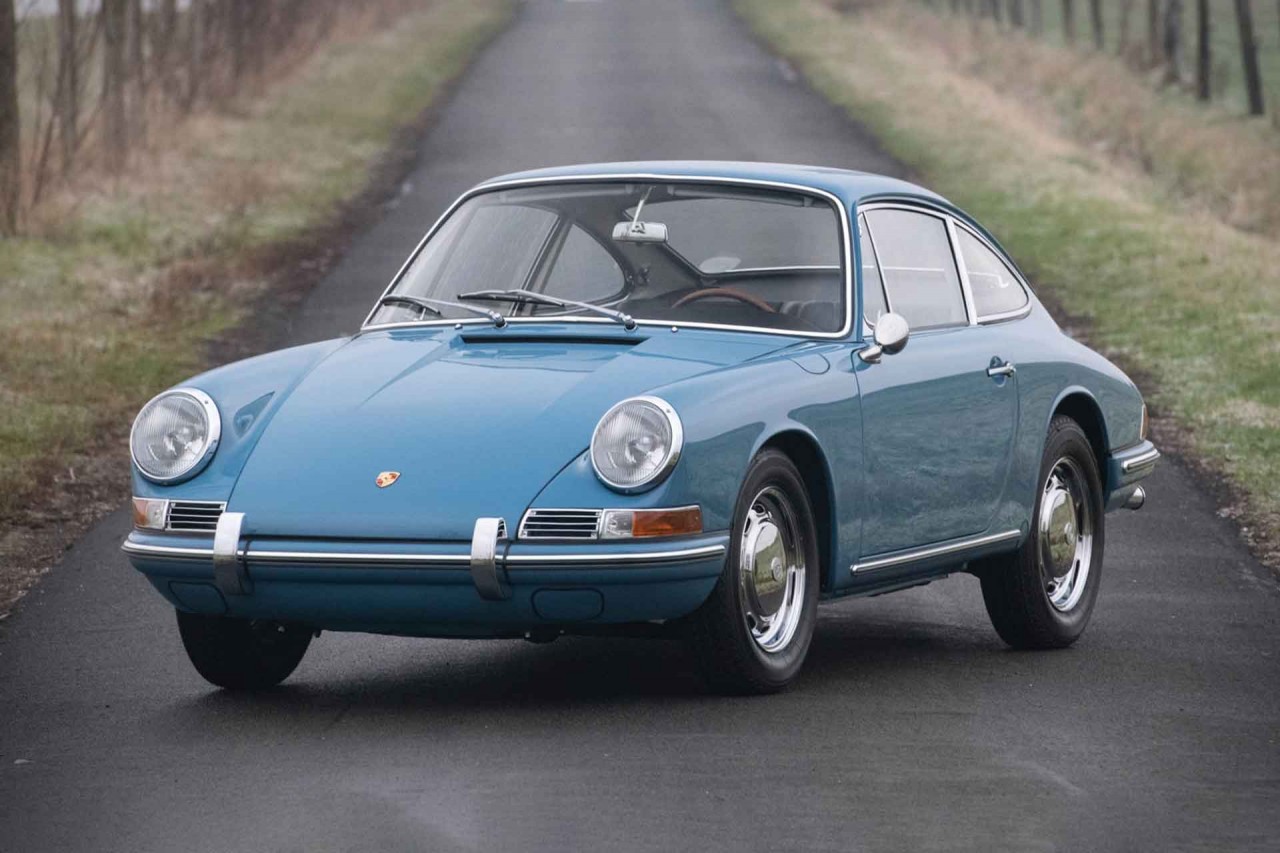 |
| Photo: Uncrate |
The Porsche 911 (pronounced Nine Eleven or in German: Neunelfer) is a two-door 2+2 high-performance rear-engined sports car introduced in September 1964 by Porsche AG of Stuttgart, Germany. It has a rear-mounted flat-six engine and originally a torsion bar suspension. The car has been continuously enhanced through the years but the basic concept has remained unchanged. The engines were air-cooled until the introduction of the 996 series in 1998.
The 911 has been raced extensively by private and factory teams, in a variety of classes. It is among the most successful competition cars. In the mid-1970s, the naturally aspirated 911 Carrera RSR won world championship races including Targa Florio and the 24 Hours of Daytona. The 911-derived 935 turbo also won the 24 Hours of Le Mans in 1979. Porsche won the World Championship for Makes in 1976, 1977, 1978, and 1979 with 911-derived models.
In a 1999 poll to determine the Car of the Century, the 911 was fifth. It is one of two in the top five that had remained continuously in production (the original Beetle remained in production until 2003). The one-millionth example was manufactured in May 2017 and is in the company’s permanent collection.
5. Volkswagen Beetle
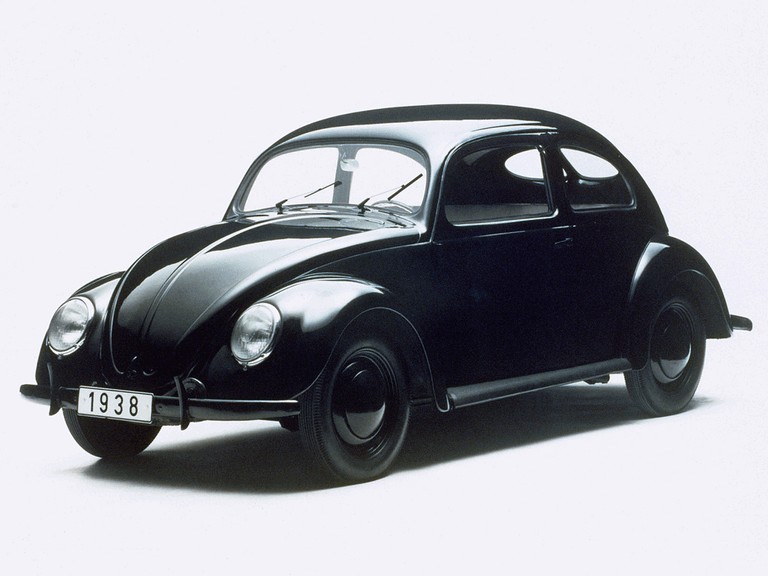 |
| Photo: Mad4Wheels |
The Volkswagen Beetle—officially the Volkswagen Type 1, informally in German der Käfer (meaning "beetle"), in parts of the English-speaking world the Bug, and known by many other nicknames in other languages—is a two-door, rear-engine economy car, intended for five occupants (later, Beetles were restricted to four people in some countries), that was manufactured and marketed by German automaker Volkswagen (VW) from 1938 until 2003.
The need for a people's car (Volkswagen in German), its concept, and its functional objectives were formulated by the leader of Nazi Germany, Adolf Hitler, who wanted a cheap, simple car to be mass-produced for his country's new road network (Reichsautobahn). Members of the National Socialist party, with an additional dues surcharge, were promised the first production, but the Spanish Civil War shifted most production resources to military vehicles to support the Nationalists under Francisco Franco.
Lead engineer Ferdinand Porsche and his team took until 1938 to finalize the design. Béla Barényi is credited with first conceiving the original design for this car in 1925, notably by Mercedes-Benz, on their website, including his original technical drawing, five years before Porsche claimed to have done his initial version. The influence on Porsche's design of other contemporary cars, such as the Tatra V570, and the work of Josef Ganz remains a subject of dispute. The result was the first Volkswagen, and one of the first rear-engined cars since the Brass Era. With 21,529,464 produced, the Beetle is the longest-running and most-manufactured car of a single platform ever made.
Although designed in the 1930s, due to World War II, civilian Beetles only began to be produced in significant numbers by the end of the 1940s. The car was then internally designated the Volkswagen Type 1, and marketed simply as the Volkswagen. Later models were designated Volkswagen 1200, 1300, 1500, 1302, or 1303, the former three indicating engine displacement, the latter two derived from the model number.
6. Porsche 924 (1976-1988)
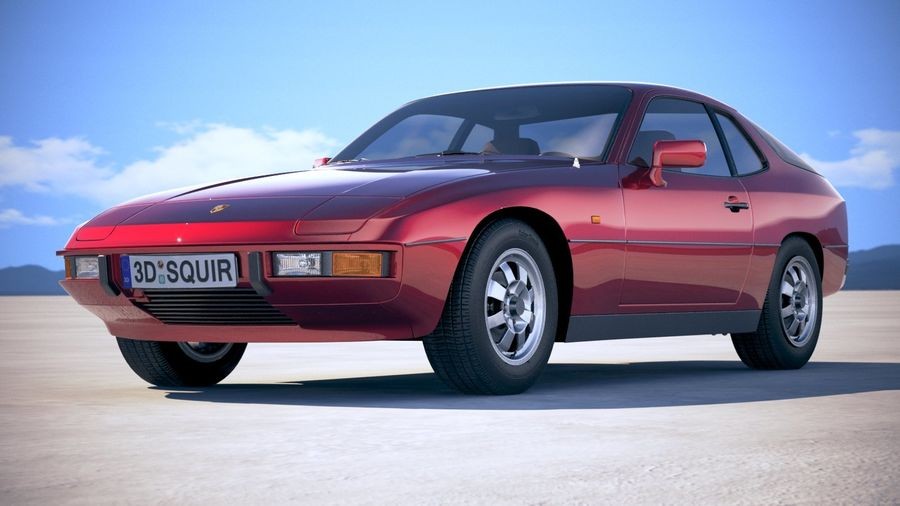 |
| Photo: Free 3D |
The Porsche 924 is a sports car produced by Audi in Neckarsulm on behalf of Porsche AG of Germany from 1976 to 1988. A two-door, 2+2 coupé, the 924 was intended to replace the Porsche 914 as the company's entry-level model.
Although the water-cooled, front-engined 928 gran turismo was designed first, the 924 was the first road-going Porsche to have a front-engine rear-wheel-drive configuration. It was also the first Porsche to be offered with a fully automatic transmission.
The 924 made its public debut in November 1975. It was loved by enthusiasts for its performance and sales success with just over 150,000 produced during a 1976–1988 production run, and an important profits generator for the company. The closely related 944 introduced in the U.S. market in 1983 was meant to replace the 924, but 924 production continued through 1985, followed by a 944-engined 924S through 1988.
The 924 has its own racing series in the UK run by the BRSCC and Porsche Racing Drivers Association. The Porsche 924 Championship was started in 1992 by Jeff May who was championship coordinator until his death on 10 November 2003. Jeff May was also one of the founding members of Porsche Club Great Britain. In the United States, the 924S is also eligible to race in the 944-Spec racing class.
7. Range Rover mk1 (1969-1996)
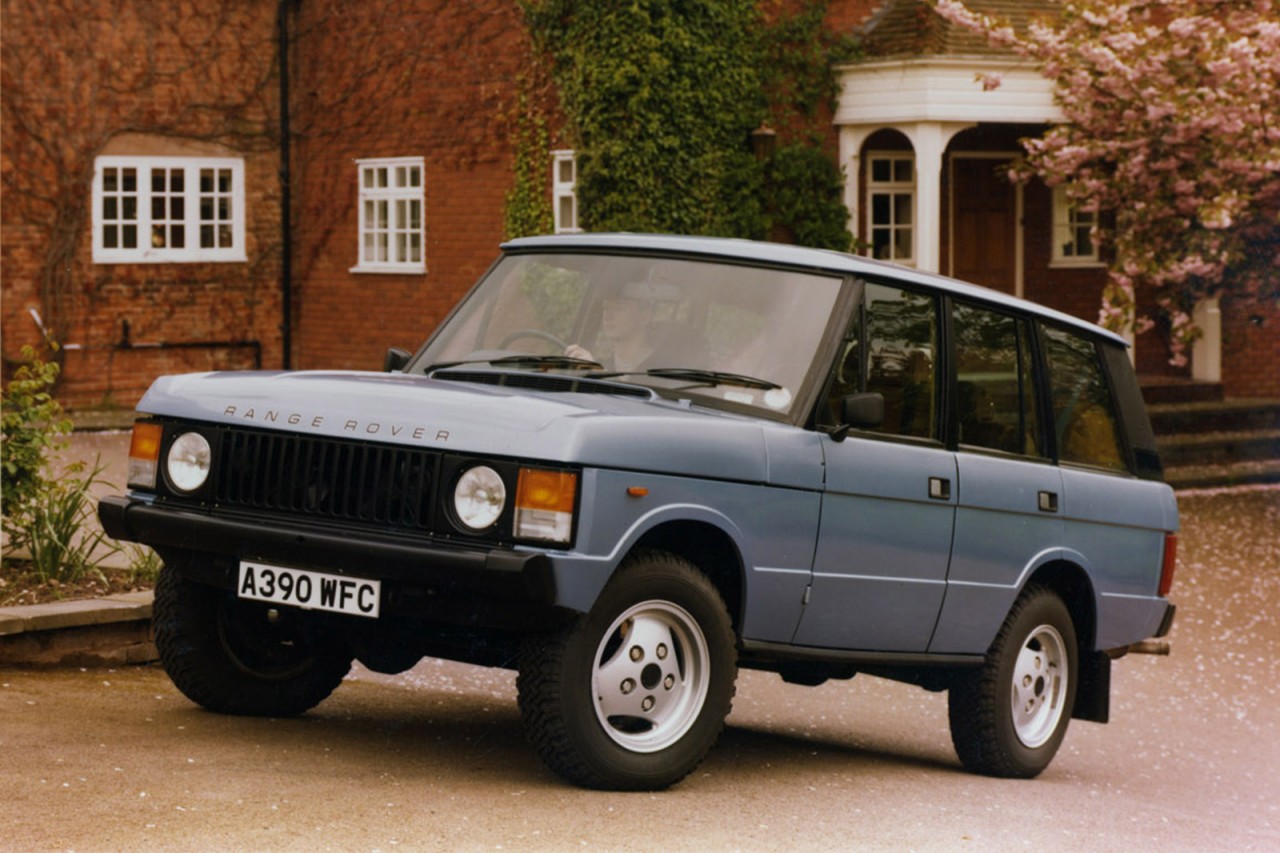 |
| Photo: Autocar |
The Range Rover Classic is a 4x4, mid-size Sport utility vehicle series produced from 1969 to 1996 – initially by the Rover (later Land Rover) division of British Leyland, and latterly by the Rover Group.
The first generation of vehicles produced under the Range Rover name, it was built as a two-door model for its first 11 years, until a four-door also became available in 1981. The Range Rover then successfully moved upmarket during the 1980s, and remarkably debuted in the U.S. as a 17-year old model at the 1987 Los Angeles Auto Show.
Availability of the two-door version was restricted from 1984, but it remained in production for some markets until 1994, when the second generation was launched. From that moment, Land Rover rebranded the original model under the term "Range Rover Classic", to distinguish it from its new P38A successor, when the two were briefly built alongside and applied the name retrospectively to all first-generation Range Rovers.
Although formally superseded by the second generation Range Rover, starting in 1994 – both the successor and the more affordable first and second series of the Land Rover Discovery were heavily based on the original Range Rover's chassis, drive-train and body structure, which in essence lived on until the third generation Discovery arrived, and its mechanical blood-line ended with the replacement of the mk. 2 Discovery after 2004.
In early 2020, the 26-year production run of the original Range Rover was counted as the twenty-seventh most long-lived single generation car in history by Autocar magazine."
8. Mercedes-Benz 300 SL
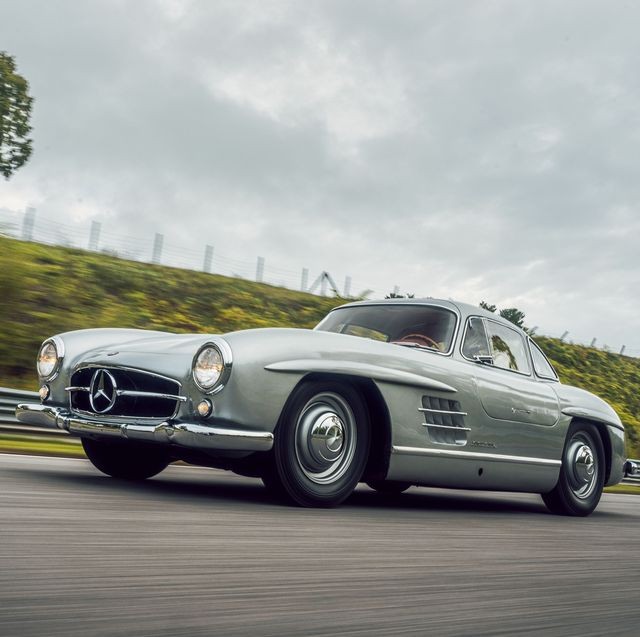 |
| Photo: Road & Track |
The Mercedes-Benz 300 SL (chassis code W 198) is a two-seat sports car that was produced by Mercedes-Benz as a gullwinged coupe (1954–1957) and roadster (1957–1963). It was based on the company's 1952 racer, the W194, with mechanical direct fuel injection which boosted power almost 50 percent in its three-liter overhead camshaft straight-six engine. Capable of reaching a top speed of up to 263 km/h (163 mph), it was a sports car racing champion and the fastest production car of its time.
Max Hoffman, Mercedes-Benz's United States importer at the time, inspired the 300 SL and saw an American market for such a car. The company introduced the 300 SL in February 1954 at the International Motor Sports Show in New York City (instead of Europe) to get it into U.S. buyers' hands sooner.
SL is the short form for "super-light" in German (super-leicht) – Mercedes' first use of the designation, referring to the car's racing-bred light tubular-frame construction. The 300 SL was voted the "sports car of the century" in 1999.
 | Top 8 Richest Indian Billionaires In Asia India is becoming more famous with many wealthy business billionaires, and the cumulative wealth of India's richest saw a rise of 50 percent in the ... |
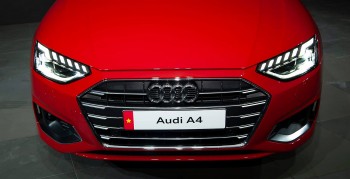 | Audi Recalls 104 Cars in Vietnam Over Mechanical Issue Free replacements for a faulty lock nut is on the way for 104 Audi cars in Vietnam; also more than 3700 Mercedes-Benz cars were recalled ... |
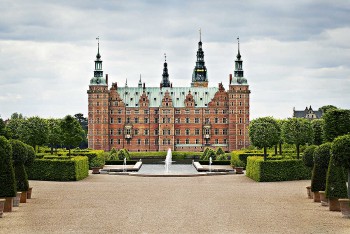 | Top 8 Most Beautiful Castles In Denmark Europe is the land of the most stunning and gorgeous castles in the world, and Denmark's castles have their own distinctive and unique architecture and ... |
Recommended
 World
World
Pakistan NCRC report explores emerging child rights issues
 World
World
"India has right to defend herself against terror," says German Foreign Minister, endorses Op Sindoor
 World
World
‘We stand with India’: Japan, UAE back New Delhi over its global outreach against terror
 World
World
'Action Was Entirely Justifiable': Former US NSA John Bolton Backs India's Right After Pahalgam Attack
Popular article
 World
World
US, China Conclude Trade Talks with Positive Outcome
 World
World
Nifty, Sensex jumped more than 2% in opening as India-Pakistan tensions ease
 World
World
Easing of US-China Tariffs: Markets React Positively, Experts Remain Cautious
 World
World





